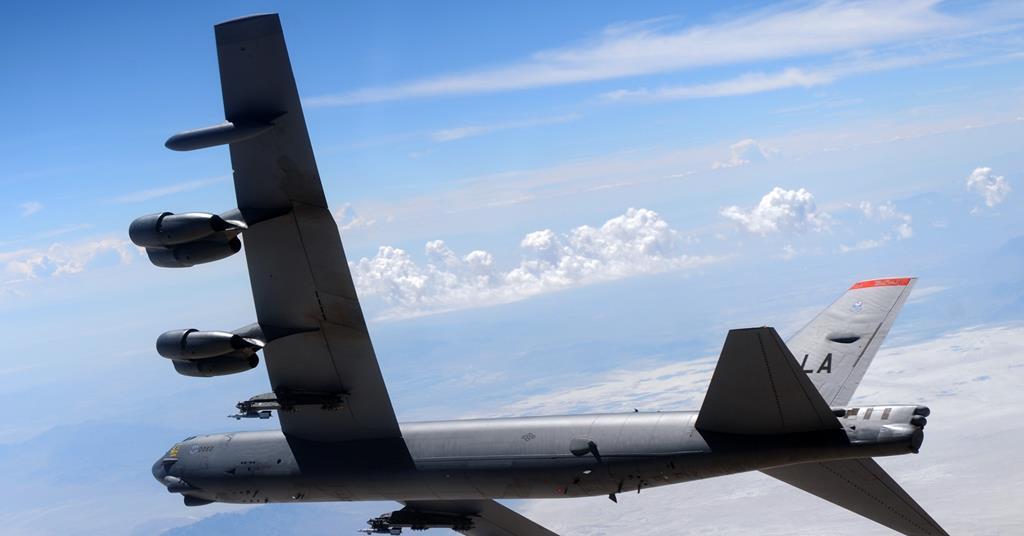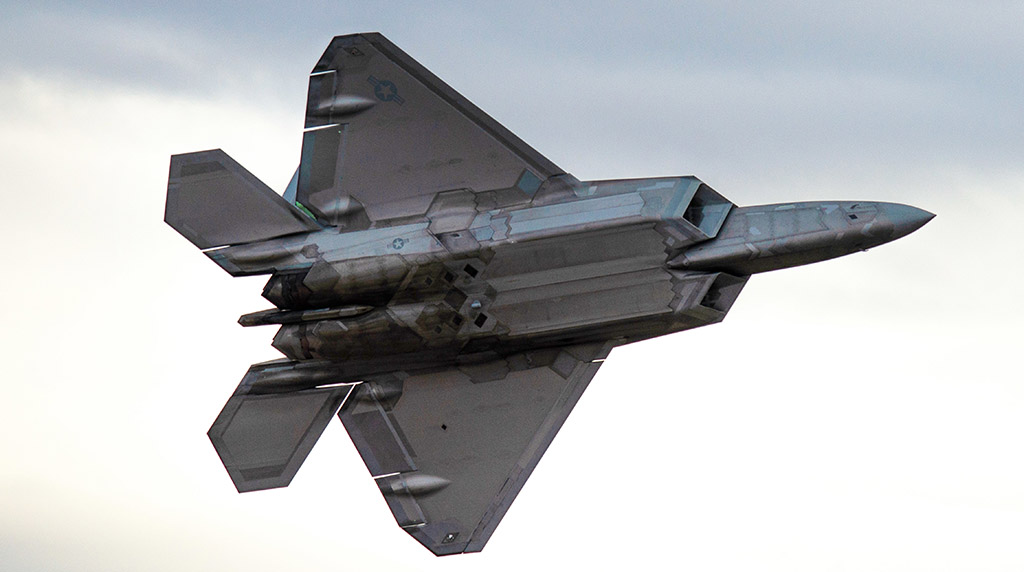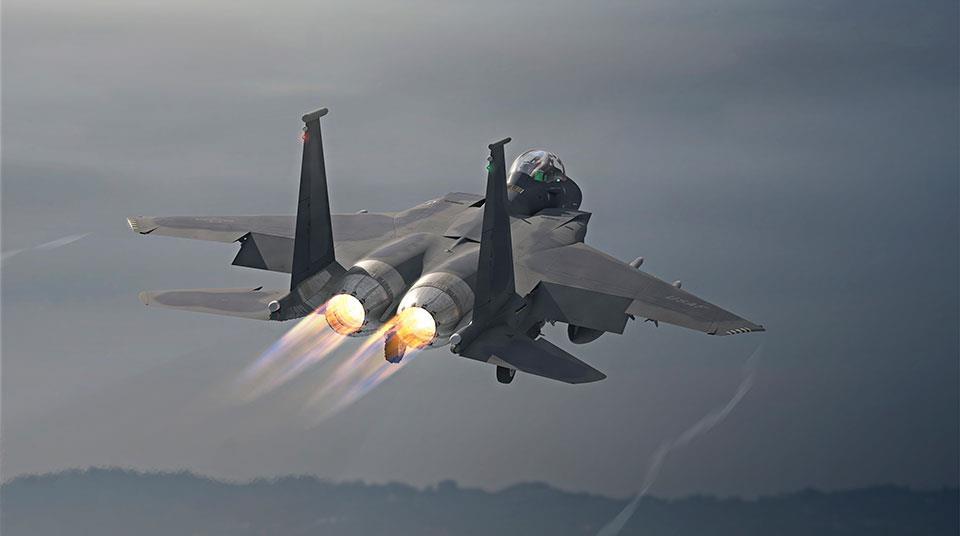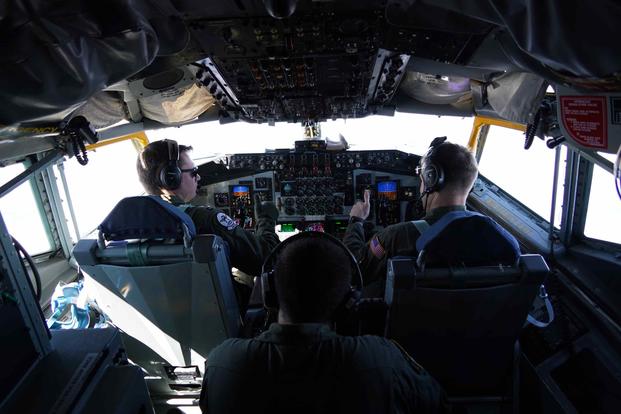Wonder what Boeing would do if the IDF and others got cunning and used B757s instead.Their old 707s are probably on their last legs, so they need tankers NOW, & if the stories I've read are correct they can't do what they've done for Colombia & Brazil & convert some 767s themselves (their preferred option AFAIK, because cheapest & reliable), because Boeing refuses to provide any support for the airframes.
USAF News and Discussion
- Thread starter RobWilliams
- Start date
I imagine that If Israel shat in the hand then fed them, there would be a serious re-think of the support that the US routinely throws their way by way of military aid.Wonder what Boeing would do if the IDF and others got cunning and used B757s instead.
MB
Todjaeger
Potstirrer
Not sure just how 'cunning' that would be. The last B757 rolled out of production in October 2004, which means the newest possible airframe would be nearly 20 years old by now. Between the likely age, accumulated flight hours, takeoff/landing cycles and potential scarcity of parts I suspect aircraft modification outfits would be somewhat hesitant to really try and convert a B757 into an aerial refueler.Wonder what Boeing would do if the IDF and others got cunning and used B757s instead.
Making their own kit & doing their own conversions isn't really shitting in the hand that feeds them. Accepting aid doesn't mean agreeing to be a colony. Selling hi-tech military kit to China could be shitting in that hand, especially if some of the technology is American, but AFAIK they stopped doing that quite a long time ago.I imagine that If Israel shat in the hand then fed them, there would be a serious re-think of the support that the US routinely throws their way by way of military aid.
MB
I bet Boeing are regretting stopping the 757 with all the issues they have been having with the 737 Max. Basically the 757 has the same fuselage diameter as the 737 (and 707, 727 as well), but due to its design could easily take a much wider range of engines with any of the compromises required on the 737. Too late now.Not sure just how 'cunning' that would be. The last B757 rolled out of production in October 2004, which means the newest possible airframe would be nearly 20 years old by now. Between the likely age, accumulated flight hours, takeoff/landing cycles and potential scarcity of parts I suspect aircraft modification outfits would be somewhat hesitant to really try and convert a B757 into an aerial refueler.
John Fedup
The Bunker Group
Here’s an update on the B-52 re-engine program. The USAF is hoping for reduced costs and a 20-40% increase in range.

 www.flightglobal.com
www.flightglobal.com

US Air Force issues draft request for proposal to replace B-52 engines
The US Air Force (USAF) released a draft request for proposal to replace the engines of the aging Boeing B-52H Stratofortress.
FormerDirtDart
Well-Known Member
Not sure whether to laugh or cry. As we're well into the fifth decade of the USAF looking into a program to re-engine the B-52 fleet.Here’s an update on the B-52 re-engine program. The USAF is hoping for reduced costs and a 20-40% increase in range.

US Air Force issues draft request for proposal to replace B-52 engines
The US Air Force (USAF) released a draft request for proposal to replace the engines of the aging Boeing B-52H Stratofortress.www.flightglobal.com
I swear, they probably could have fielded a whole new bomber class with as much money and time they've spent on the BUFF re-engine effort
the concerned
Active Member
With the main focus now being China and the Pacific I personally think they are concentrating on the wrong plane. With the B-1 being used for maritime strike using Lrasm and also now being explored as a hypersonic launch platform would this be the aircraft deserving the more attention.
The B-1B is costly to operate and own, probably more so than the B-52. From what's been said in recent years, the intention is to keep the B-52 operational for another 40 years and retire the B-1B in the meantime. However the intentions of the USAF and what actually happens depends entirely on the Congress as the A-10 drama has shown.With the main focus now being China and the Pacific I personally think they are concentrating on the wrong plane. With the B-1 being used for maritime strike using Lrasm and also now being explored as a hypersonic launch platform would this be the aircraft deserving the more attention.
Boagrius
Well-Known Member
Some time ago when AIM260 was announced, I must confess I was puzzled to hear that the new missile would not use a throttleable ramjet/VFDR for propulsion, since the ramjet's ability to tailor its thrust output to the unique parameters of a given missile launch ought to be a much more efficient way to manage the missile's energy than is the case with traditional solid fuel motors. While I had always thought a Meteor-style ramjet was needed to accomplish this level of thrust control, it looks like I may have been wrong:
Details on how exactly the VTS Active Nozzle works don't appear to be in the public domain, but the concept seems to turn regular solid-propellant rocket motors into throttleable/quasi-throttleable designs, with the added benefit of thrust vector control. If my understanding of this is correct, this sort of technology could be quite a game changer in that it would provide many/all of the benefits of ramjet propulsion and TVC without the usual bulk, weight and drag penalties. The potential applications are pretty broad, but if you paired something like this with whatever other sorcery the boffins have cooked up, I think that the significant claimed range increase of AIM260 over the comparably sized AIM120 (or the AMRAAM-like range of a tiny weapon like Peregrine) starts to make more sense.
Details on how exactly the VTS Active Nozzle works don't appear to be in the public domain, but the concept seems to turn regular solid-propellant rocket motors into throttleable/quasi-throttleable designs, with the added benefit of thrust vector control. If my understanding of this is correct, this sort of technology could be quite a game changer in that it would provide many/all of the benefits of ramjet propulsion and TVC without the usual bulk, weight and drag penalties. The potential applications are pretty broad, but if you paired something like this with whatever other sorcery the boffins have cooked up, I think that the significant claimed range increase of AIM260 over the comparably sized AIM120 (or the AMRAAM-like range of a tiny weapon like Peregrine) starts to make more sense.
Last edited:
John Fedup
The Bunker Group
With the commercial airline business in a tailspin, I assume engine manufacturers will extremely aggressive in trying to get the B-52 contract, especially GE since many of its business units were not doing well before COVID. The USAF timing for this couldn’t be better.
Redlands18
Well-Known Member
plan to keep it in service till 2050, got to keep one flying until 15 April 2052, why?Not sure whether to laugh or cry. As we're well into the fifth decade of the USAF looking into a program to re-engine the B-52 fleet.
I swear, they probably could have fielded a whole new bomber class with as much money and time they've spent on the BUFF re-engine effort
To celebrate the Centenary of its first flight of course, what an amazing achievement that would be.
the concerned
Active Member
This is just a theoretical question . If the USAF does consider putting external munitions back on the B-1b would it be possible for the aircraft to carry Sm-3's and would it be possible to use them for anti satellite operations.
I would think that a lot of testing would be required, and the birds would still need 6to be queued to their targets. An interesting thesis though because the B1B would get them to a good height.This is just a theoretical question . If the USAF does consider putting external munitions back on the B-1b would it be possible for the aircraft to carry Sm-3's and would it be possible to use them for anti satellite operations.
However you'd have to have the aircraft in the air on permanent patrol and it would have to be patrolling an area near a potential target.
I just saw this Raptor flying display on Facebook.
I am an absolute novice regarding what’s good, awesome, ordinary or boring when it comes to flight but this plane seemed to be doing stuff I haven’t seen a fast jet do before.
I am an absolute novice regarding what’s good, awesome, ordinary or boring when it comes to flight but this plane seemed to be doing stuff I haven’t seen a fast jet do before.
John Fedup
The Bunker Group
A F-22 was lost today in a training mission. The pilot ejected safely. A sad reminder that the Raptor program was terminated prematurely.

 theaviationist.com
theaviationist.com

BREAKING: F-22 Crashes Near Eglin Air Force Base. Pilot Ejected Safely.
The aircraft reportedly crashed during a training mission. An F-22 assigned to the 43rd Fighter Squadron, part of the 325th Fighter Wing, based at Eglin
John Fedup
The Bunker Group
I think P&W should STFU about GE’s sole source contract for 400+ engines for the F-15EX after lobbying Congress for sole source contract on their F135 engine for the F-35, which will likely amount to at least 4000 engines.

 www.flightglobal.com
www.flightglobal.com

US Air Force cancels GE Aviation sole-source for F-15EX engine, asks for competitive bids
The US Air Force is asking for engine proposals for its Boeing F-15EX programme, just a few months after it said it would grant a sole source award to GE Aviation for 480 of the company's F110 jet turbines
John Fedup
The Bunker Group
It would seem COVID may end up helping the USAF with its pilot shortage problem. The expected huge contraction of commercial aviation will see current pilots staying in and commercial pilots returning.

 www.military.com
www.military.com

Air Force Preparing for Furloughed Commercial Pilots to Request Return to Duty
200 pilots have chosen to stay in the Air Force as major airlines operate in a limited capacity during the COVID-19 outbreak.
This will help western airforces around the world, for the short term at least. Though unless returning pilots are put into longer contracts the problem will return in the medium/long term though when civil aviation kicks back into gear. There are a lot of civil pilots who will be retiring in the next 5-20 years so that demand won’t go away.It would seem COVID may end up helping the USAF with its pilot shortage problem. The expected huge contraction of commercial aviation will see current pilots staying in and commercial pilots returning.

Air Force Preparing for Furloughed Commercial Pilots to Request Return to Duty
200 pilots have chosen to stay in the Air Force as major airlines operate in a limited capacity during the COVID-19 outbreak.www.military.com
I think it will also help all aspects of military retention by showing the job security that the military offers.
Last edited:
Terran
Well-Known Member
Civil aviation has also had issues with finding pilots. The short term shifts won’t fix that. It seems to me like some major shifts have to happen at younger ages. Perhaps an expansion of the CAP program might help. More automated cargo and civil aviation in the longer term also seems necessary.
